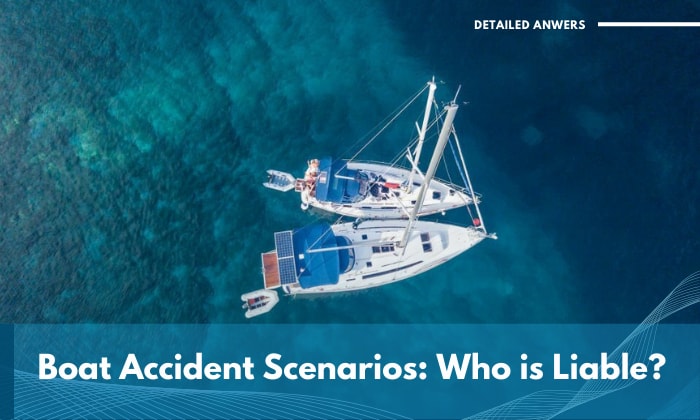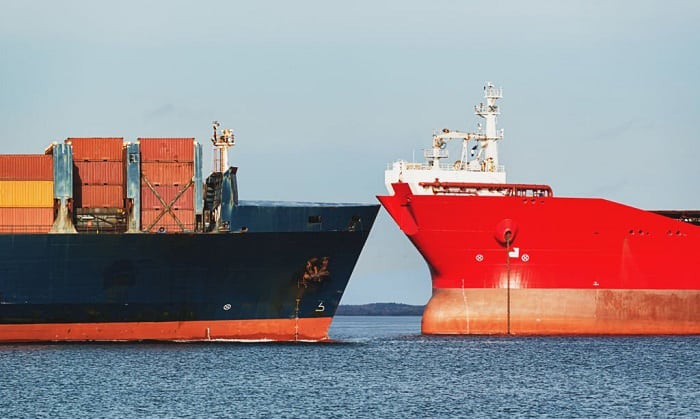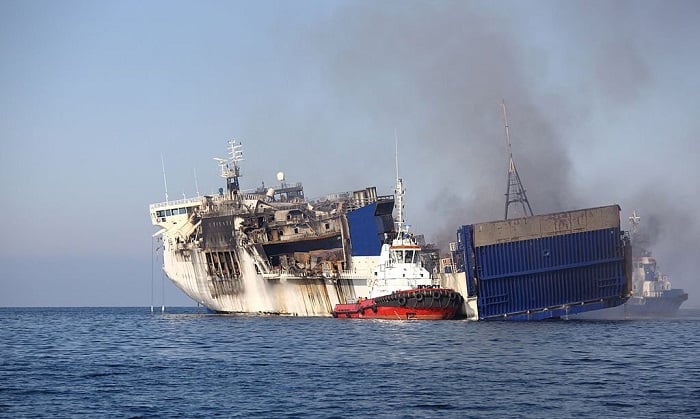Who is responsible for avoiding a collision between two boats? Is it the captain or someone else on the crew? Could we even, dear Neptune, lay the burden on civilian passengers?
First and foremost, the chain of command has to be followed, so this responsibility falls entirely on the vessels’ respective captains or operators by default. It has to be someone fit to man the boat legally and has knowledge of navigation rules.
This rule applies to any area of water you’re sailing in and regardless of the vessel’s size and type.
Table of Contents
The Persons Responsible for Avoiding Boat Collisions
The rules of seamanship stress the importance of having situational awareness and knowing the rules of the water, two critical factors related to boat collisions.
It’s pretty much a given, really. After all, the captain is the one who is licensed and educated to man a boat and undergoes training in ways to avoid having a collision. He or she is also the one who’s aware that it’s okay to break the rules, and which specific ones to break if it means preventing a collision and saving a lot of lives.
You’re probably already aware of what give-way and stand-on boats are. In this case, such labels don’t really apply, nor is one type automatically more culpable than the other, just because of their position.
Both vessels and their operators need to exert all efforts to stop a possible collision from happening.
If the captain is unable to perform his or her duty, the second in command or the Chief Officer takes charge of skippering the ship.
Anyone who becomes the boat’s operator, as long as he or she is qualified, will always hold the primary responsibility for preventing a PWC accident.
You see, the captain is like the king or queen of his or her ship, especially for large vessels. They can be given absolute authority, but they also need to make it a point to take care of their charges (i.e. the boat and its passengers).
When all is said and done, that Spider-Man quote couldn’t apply more in this case, “With great power comes great responsibility.”
Of course, the key aspect here is ability. They definitely need to be prepared to take on this undoubtedly crucial responsibility.
Frequently Asked Questions
What are some common boating accidents?
Did you know that two boats meeting head-on is just one among the many legal types of boating accidents?
Others include drowning, capsizing, fires, injuries, and passengers falling overboard. These facts only point to one pivotal truth: operating any watercraft is quite risky and can occasionally be life-threatening for everyone aboard.
Constant vigilance should aptly be exercised by all able persons of authority on board.
Rules to avoid collision of boats
Anyone who is responsible for keeping a sharp watch and avoiding boat collisions should have more than a cursory familiarity with rules that help prevent them. You have to be aware of the steering and sailing rules pertaining to the risks of collision, in short.
You can start with this booklet on Navigation Rules provided by the US Coast Guard: https://www.navcen.uscg.gov/sites/default/files/pdf/navRules/navrules.pdf
Look in particular at Rule 5 regarding look-outs and, more importantly, Rule 7, which lays out the guidelines to mitigate the risk of collision. Other points worth taking note of are Rules 12, 14, 15, and 19.
What should you do to avoid colliding with another boat?
Every time two boats are operating near each other, their captains should make a habit of following these solid strategies:
- Always be aware of the other boat’s circumstance, especially if water and weather conditions prevent it from correcting its course to avoid a collision.
- Don’t delay alterations when the need arises.
- Make a single alteration, especially one done in order to prevent collisions, and be sure it’s readily visible to the other vessel. Refrain from doing multiple successive alterations.
- Keep a safe distance from other boats and be thorough when checking how near or far you are as the craft passes near you.
When two boats meet, who has the right of way?
If you are approaching a vessel on its port (left) side, you have to give way. Any boat that is being approached from that side has the right of way.
You don’t necessarily have to stop if you’re the give-way vessel. Most boats perform a safe evading action by turning to their starboard side in order to pass the other (stand-on) vessel’s stern.
Conclusion
So, to wrap up everything we’ve discussed as to who is responsible for avoiding a collision between two boats, it will always fall in the hands of the operator or current skipper.
They won’t be able to sufficiently act on this responsibility without an in-depth knowledge of the seamanship and navigation rules. It goes without saying that they should take the time to acquire the necessary training and education to ensure they’re up to the task.
Related:

“My intention from the first day establishing Boating Basics Online is to provide as much help as possible for boaters who want to experience a first safe and convenient trip. So feel free to join us and share your beautiful journeys to the sea!”



